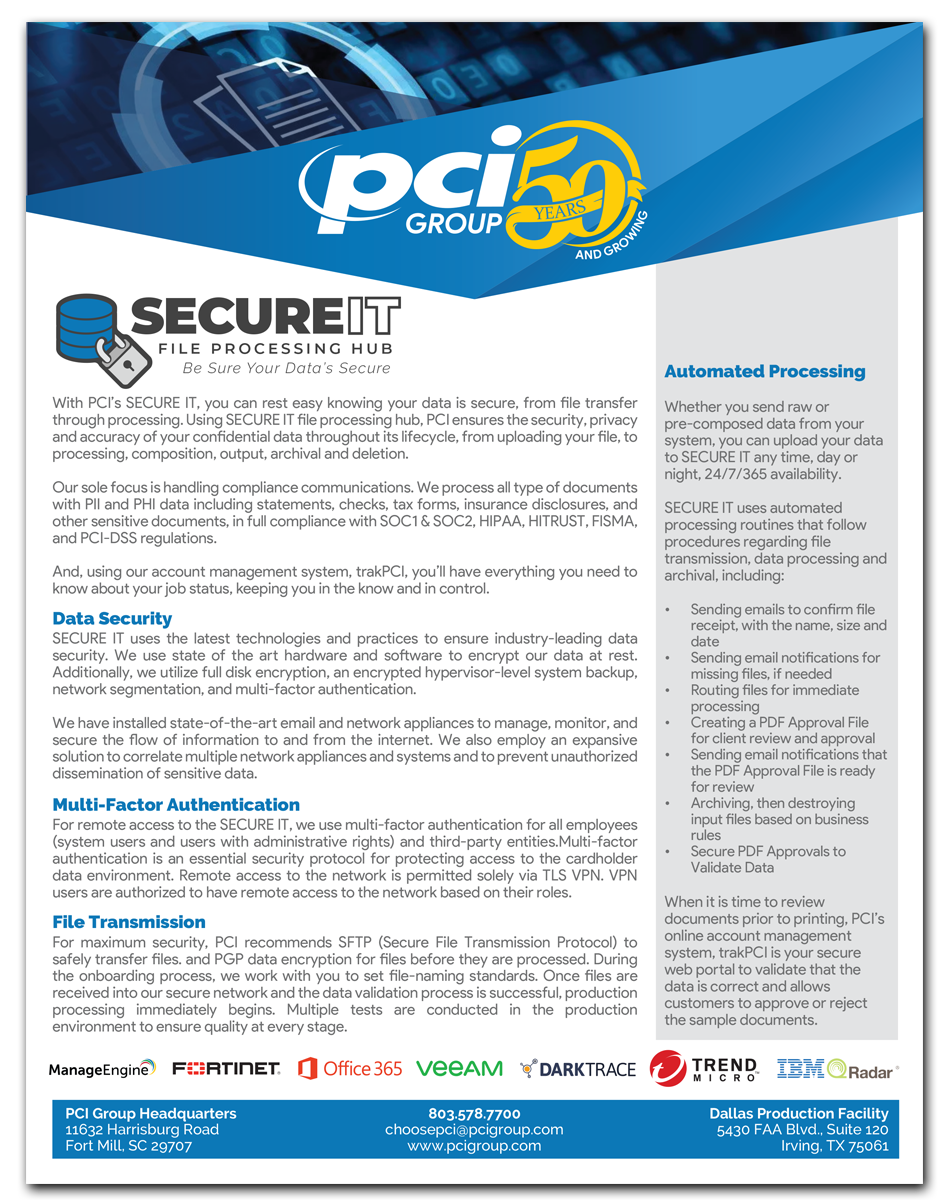
When you choose to outsource transactional print and mail, one of the most critical aspects of the deal is meeting your service-level agreements (SLAs). These types of letters must adhere to compliance and internal timelines. Failing to meet transactional print SLAs should be a sign to find a new vendor. It demonstrates that they don’t have modern technology and processes to ensure timely delivery.
In this post, we’ll review why transactional print SLAs matter and the technology required to meet them.
SLAs in Transactional Print Are Non-Negotiable
When evaluating transactional print and mail companies, you should be asking about how they manage SLAs and what their rating is for meeting these.
The reason why it matters so much is that your communications are always time-sensitive. The timeframe for turnaround falls into a few buckets:
- Adhering to regulatory rules about the timely delivery of communications like EOBs (explanation of benefits), cost estimates in alignment with the No Surprises Act, or timeframes for sending collection letters
- Getting invoices and statements to customers at the necessary intervals to ensure on-time payments
You typically agree to SLAs in the implementation phase of working with a vendor. They should be able to provide you with their SLA records, as well.
For example, we print and mail or email 85% of communications on the same day or within 24 hours of customer approval. Another 10% disseminate into the mail stream in 48 hours. Key to meeting these metrics are our use of Lean Manufacturing, standard works, Six Sigma, and a quality assurance program. We also make key performance indicators (KPIs) part of our visual factory approach.
Monitoring and measuring SLAs is standard for every customer, and we have a 99.7% compliance rating in fulfilling our SLA commitments.
Beyond these standards, the right technology plays a crucial role in transactional print SLAs.
 What Technology Supports Meeting SLAs in Transactional Print?
What Technology Supports Meeting SLAs in Transactional Print?
Supporting the processes that drive SLA are key pieces of technology. By integrating these into our workflows, we can adopt automation and maintain consistency and accuracy.
Advanced Inserting Machines
Commercial printers can use many different inserters. They aren’t all the same. The equipment we use has much greater functionality than standard inserter capabilities. First, it’s flexible and can work with any size of envelope, not just #10s.
Second, it infuses integrity into the process. It creates a framework for intelligent insertion. By using integrity cameras, they read the 2D barcodes on each document. This feature ensures the inserter puts the correct pages in each envelope. Another camera takes an image of the inserted envelope to verify the process.
With this advanced technology, we can automate all inserting, accelerating production. Customers can be confident that we meet their SLAs while enhancing accuracy.
Modern Inkjet Printers
The second piece of technology is the printer itself. Our facilities use high-speed inkjet printers that print in full color, ingesting the white rolls of paper. This printing process, called the White Paper Factory™ (WPF), uses reams of white paper to produce the jobs. There’s no changing of paper type, which delays work.
The WPF marries fully composed files with in-line production. The result is the ability to print dynamic content on each document. It eliminates the need for inserts or pre-printed templates, which add work and costs to print jobs.
Inserters and printers work together to deliver a streamlined workflow. White paper feeds in, printers produce documents from digitally composed files, and inserters quickly and accurately insert pages into an envelope.
Is Your Provider Meeting Transactional Print SLAs?
SLAs aren’t just simple guidelines. They represent a commitment to meeting deadlines for transactional mailings. If your current provider is falling behind or doesn’t report SLA metrics to you, it’s time to ask questions and possibly move on. Our dedicated commitment to SLAs is unwavering and supported by innovative technology.
Let’s talk about how to meet your SLAs all the time. Contact us today for a free consultation.


